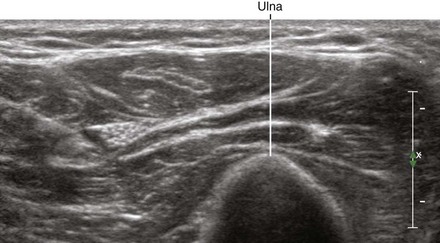3 Attenuation
When a nonattenuating fluid (e.g., blood or injected local anesthetic) lies within an attenuating sound field (e.g., soft tissue), enhancement of echoes deep to the fluid occurs. This phenomenon, originally described as posterior acoustic enhancement (also called increased through-transmission), is due to lack of absorption of the sound waves by the fluid.1 This attenuation artifact is a potential source of problems, especially during regional blocks where nerves are situated close to blood vessels.








